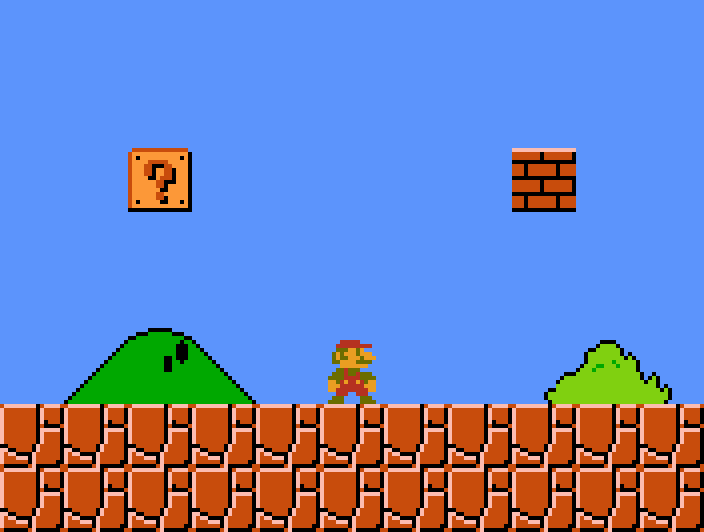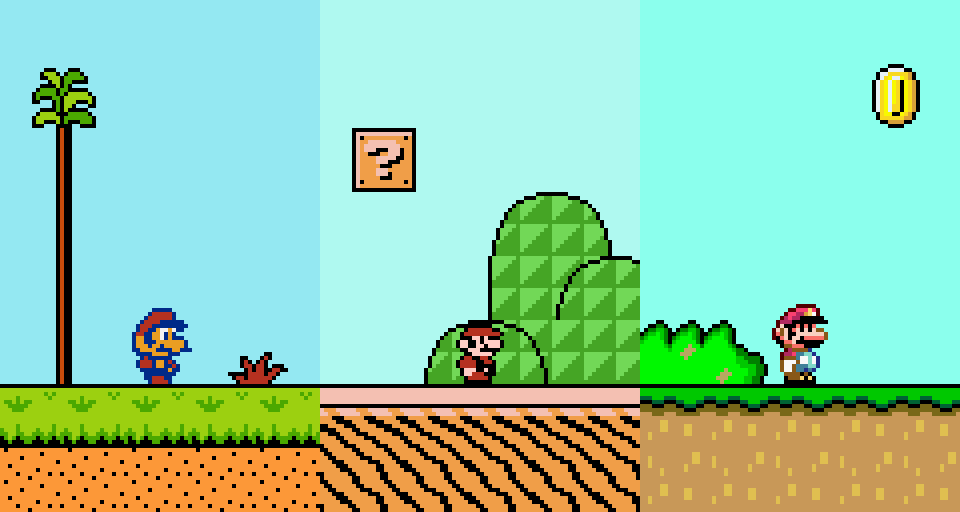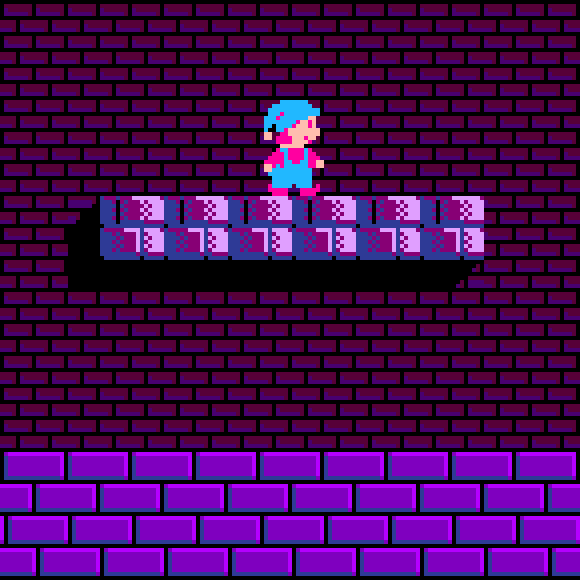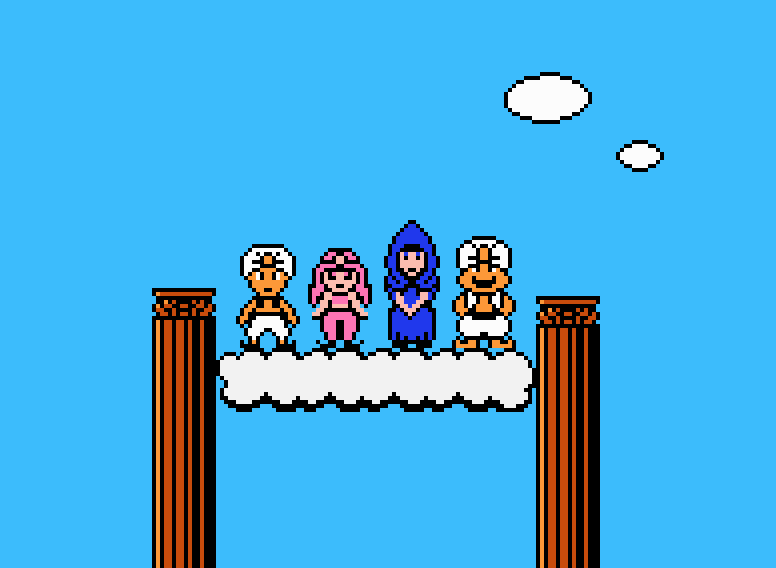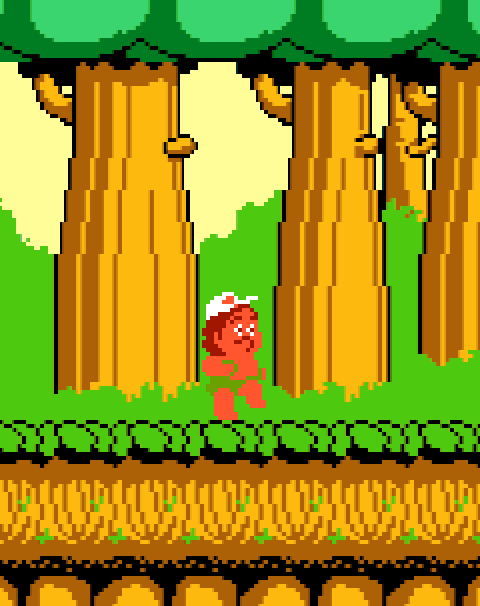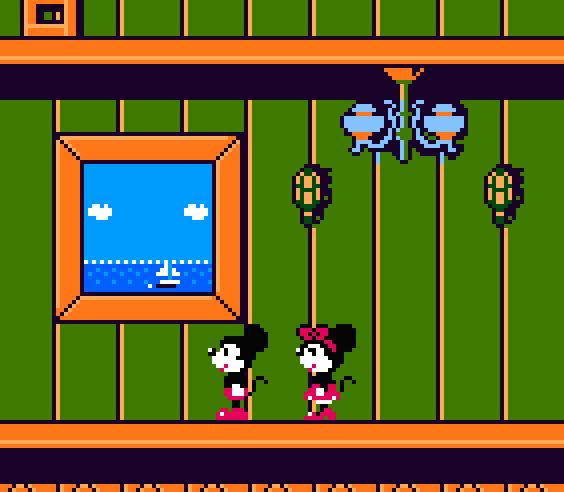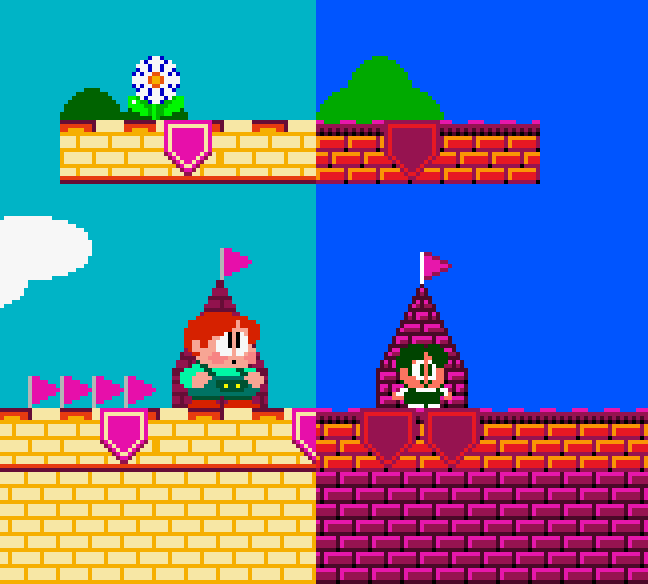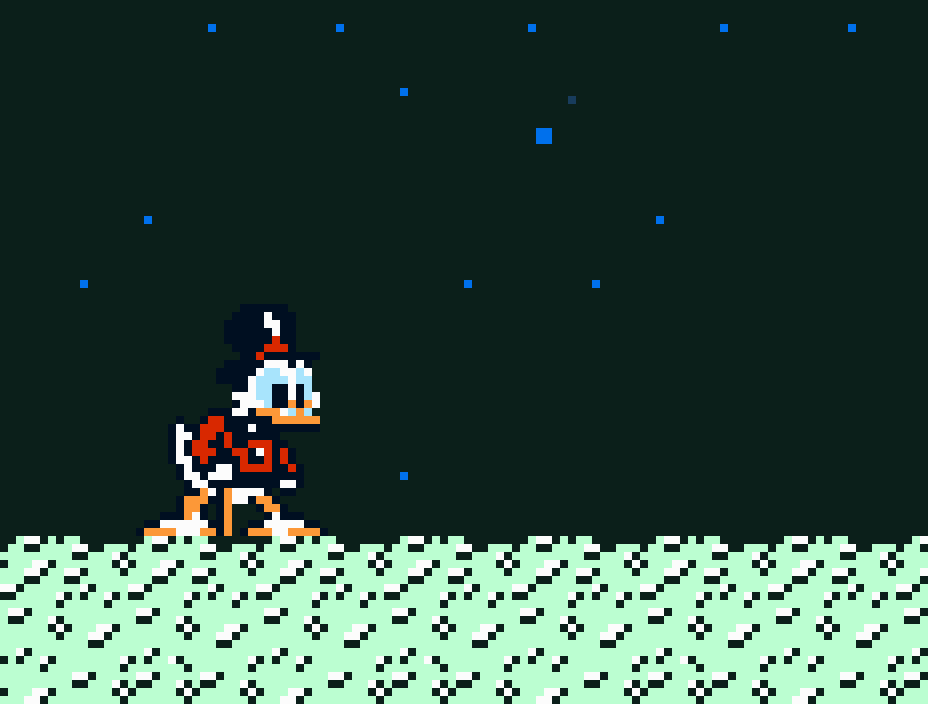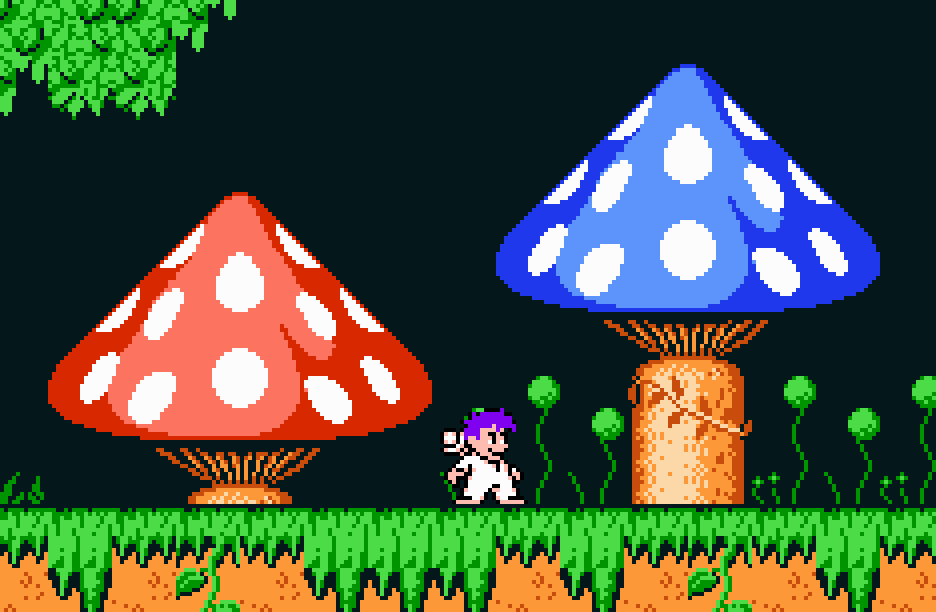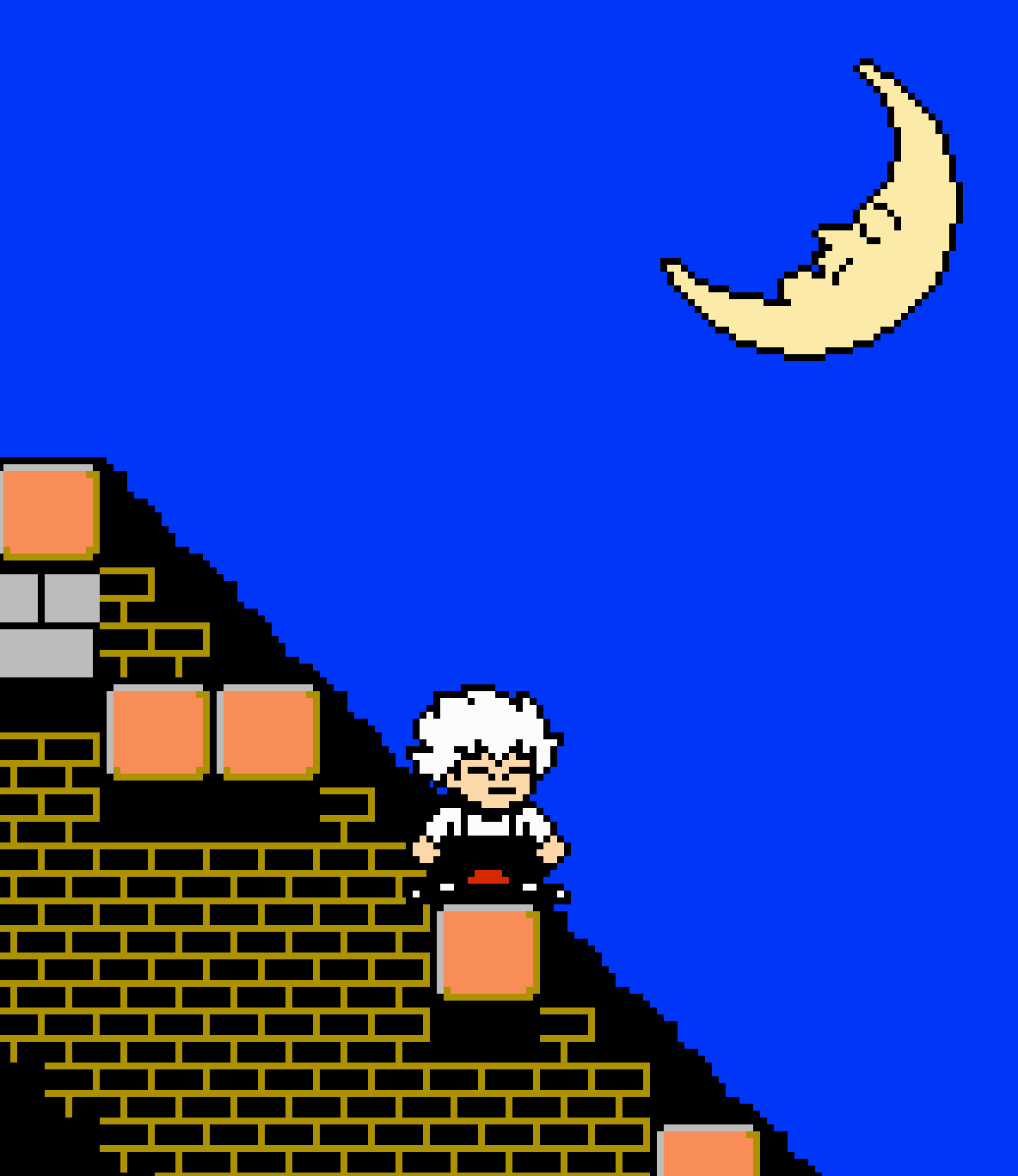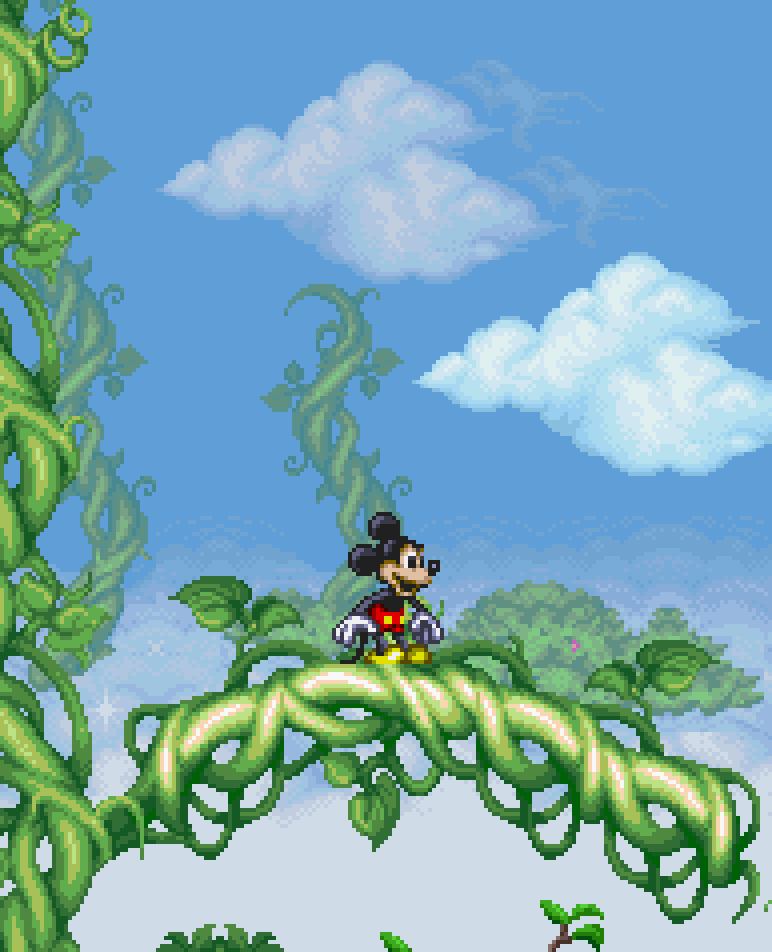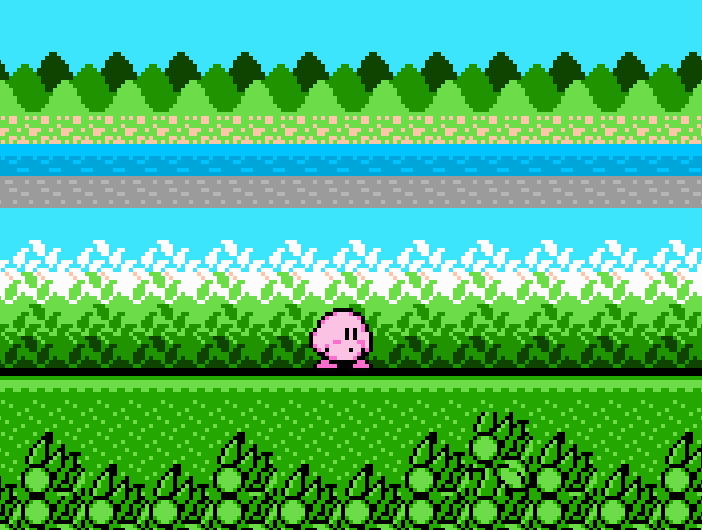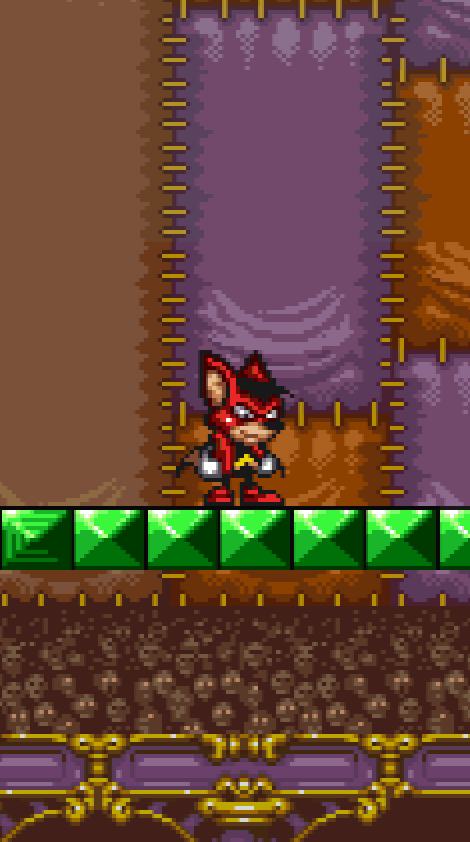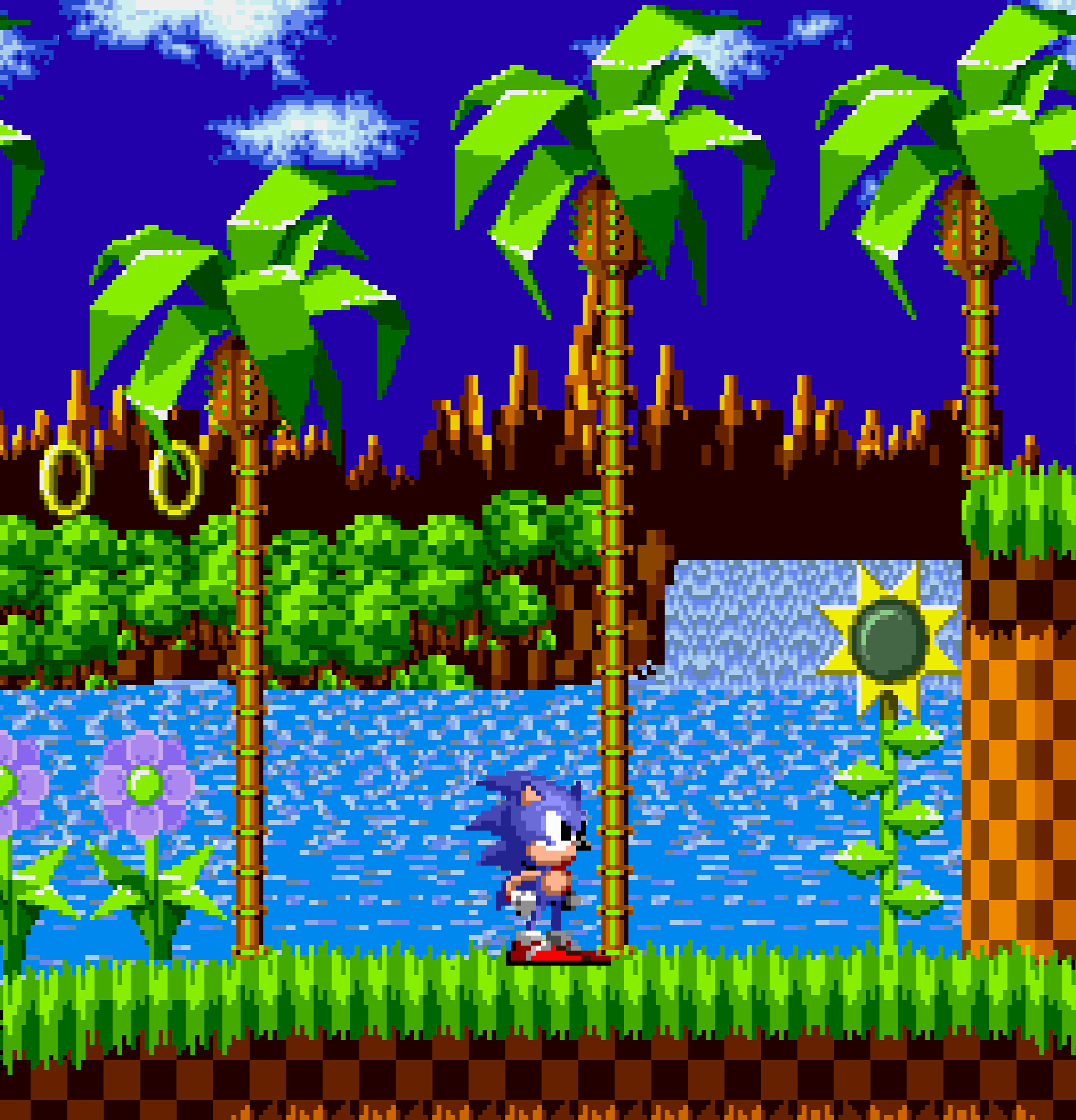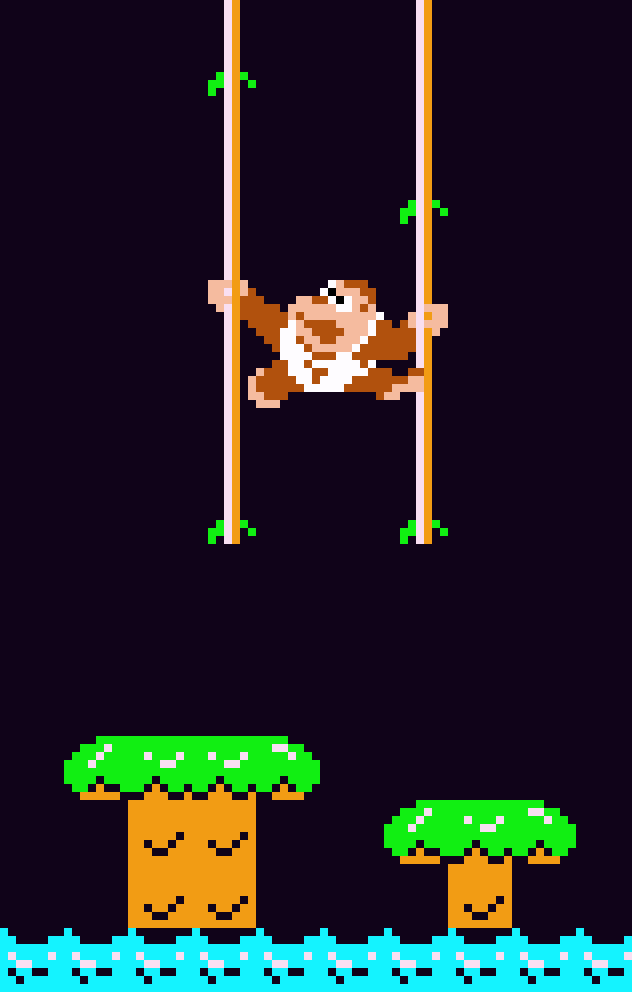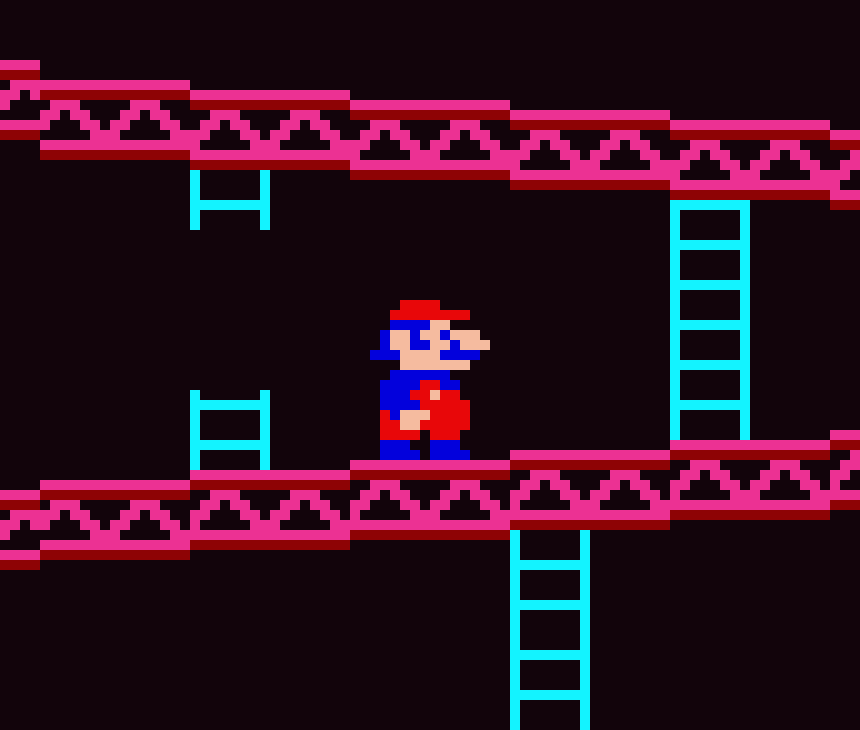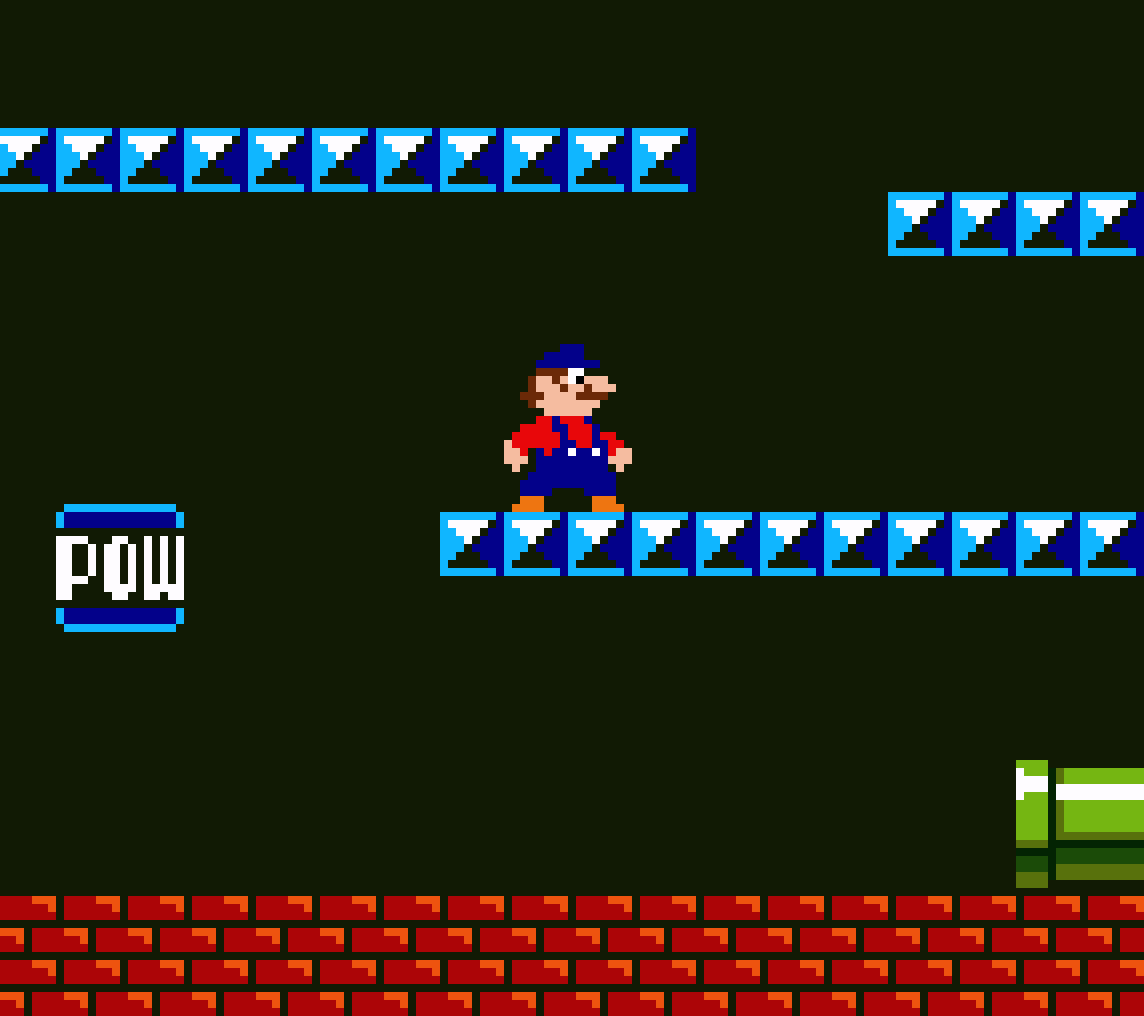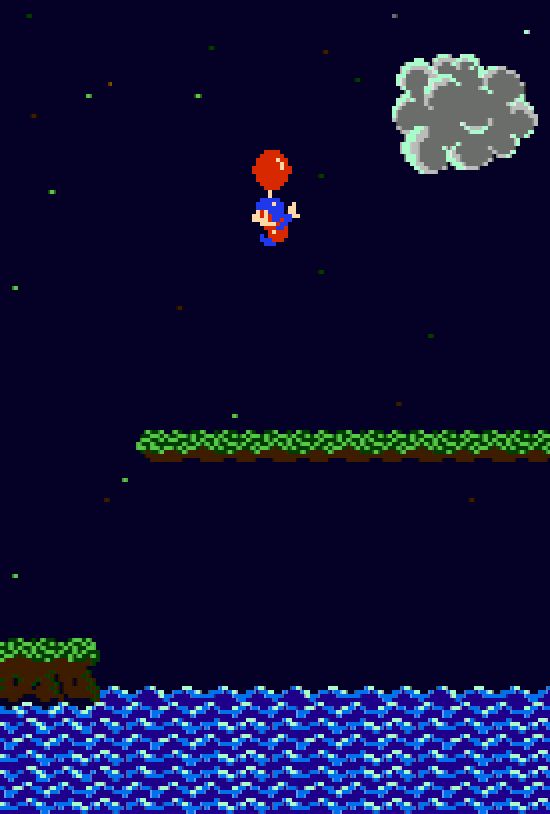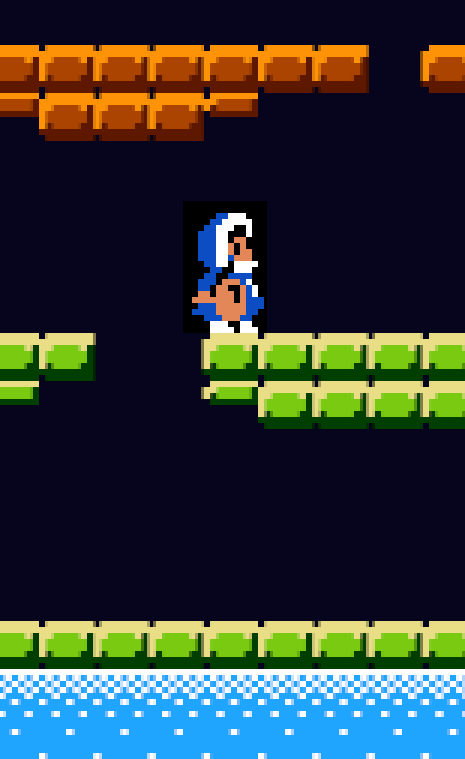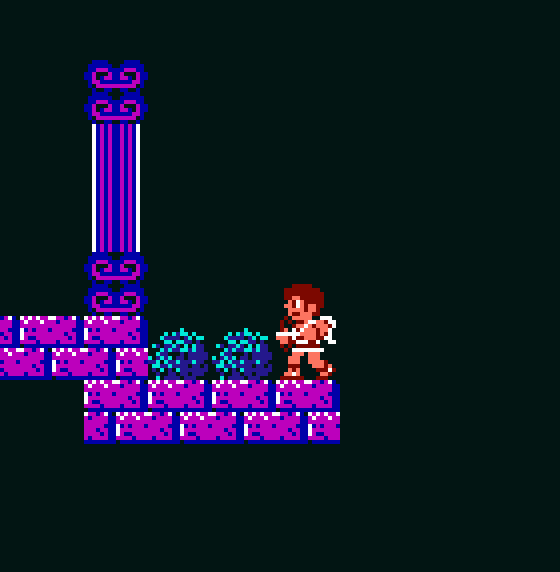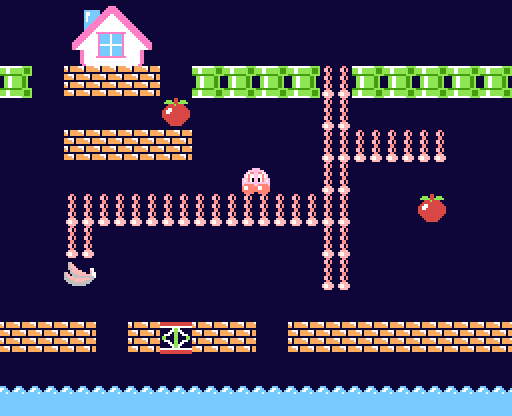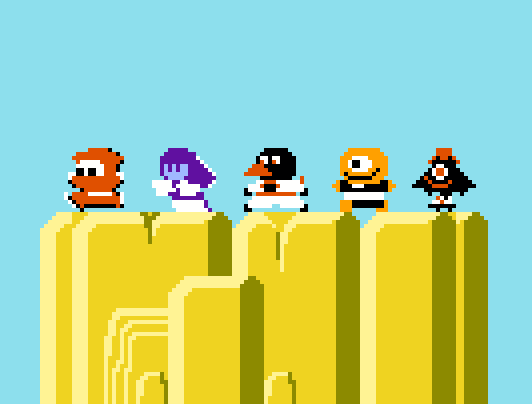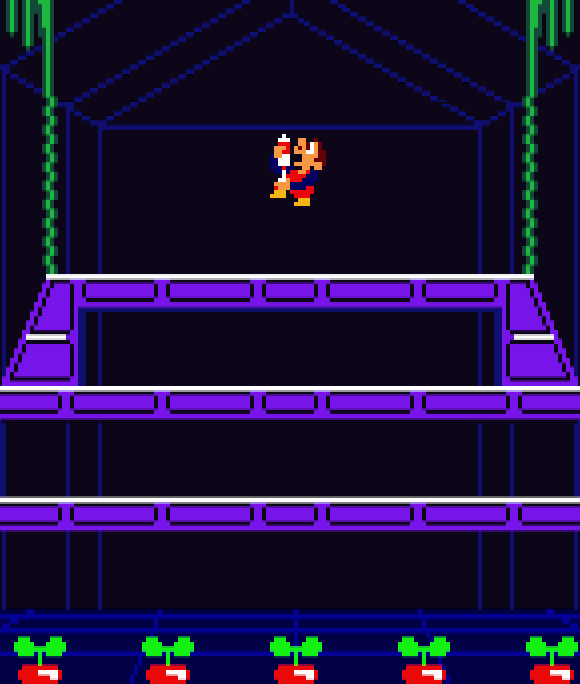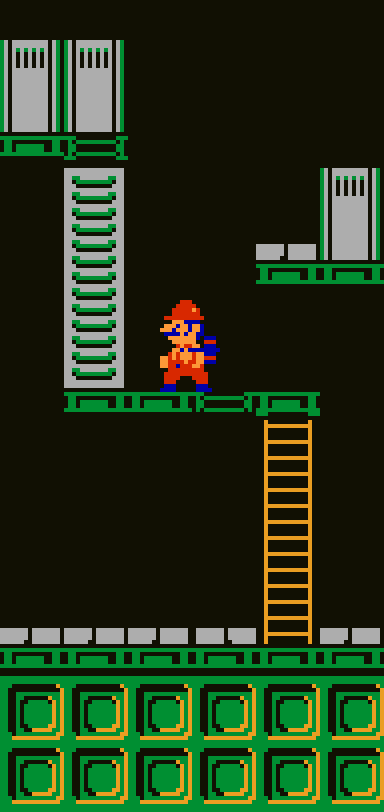The Origin of Mario’s Trademark Death Animation
Just by the numbers, the video game protagonist who has died the most times would have to be Mario — not because his games are especially hard, but because there are so very many of them, a large percentage of which allow the player to send Mario to his doom. Were he sentient, Mario would have to wonder what he’d done to earn the terrible fate of dying over and over again, in a hole one time or in a pit of lava the next, but always at the hands of some unseen master who just can’t seem to get the timing right.
I write this post not to speculate about Mario’s karmic punishment, however, but instead to talk about the specific manner in which he dies. It’s the way that probably jumped to mind as soon as you began this post: his mustachioed face turned toward the screen (and therefore toward the you, the player) as he jumps up and over an otherwise nonexistent z-axis, at which point he falls off the earth itself and into places unknown.
Here, let me give you a visual aid. And if you’re like me, you’ll be able to hear this gif in your head.
While that one is from Super Mario Bros., he dies in much the same way in Super Mario Bros. 2, 3 and World.
To be clear, I fudged the timing and arc of these Mario death drops to match, just to show how this animation sequence remained a constant in his side-scrolling adventures. The “up and over” arc is slightly different in each, but I made them uniform to prove a point. (And if you’re noticing that the Super Mario Bros. 2 sprite seems oddly more detailed than the Super Mario Bros. 3 one, here’s why.)
Each time Mario dies in this manner, it’s like he’s looking at you and asking why you let this happen. This pose is especially odd because in most of these games, Mario exists in profile, facing to the left or to the right, presumably looking at whatever is going to kill him next. There are exceptions, but in general we are most likely to see him break the fourth wall when he dies. Perhaps because it’s such a departure from the way Mario usually looks, this particular style of dying has become iconic, maybe even a sort of default for the idea of how a video game character should kick the bucket. Now, most video game characters do not die in this manner, but a lot have. And I’m thinking it is specifically Super Mario Bros. that popularized it, because you see a lot of similar death animations following its release in 1985.
Consider, if you will, an incomplete but nonetheless representative overview of some examples of non-Super Mario series characters who nonetheless die Super Mario-style.
Milon’s Secret Castle, a Hudson Soft platformer-puzzle game released in 1986, has its main character dying almost identically to Mario — just not leaping nearly as high before plunging off the bottom of the screen.
Although the legacy of Doki Doki Panic ended up being as an appendix in Mario’s history, the game had quite a few nods to Super Mario games even before it was transformed into the western Super Mario Bros. 2. There are POW boxes, for example, as well as stars that grant you invincibility. It’s no coincidence that heroes Imajin, Lina, Mama and Papa die exactly like Mario did.
The 1986 title Hudson’s Adventure Island has its roots in Sega’s Wonder Boy, but both games kill off their heroes by having them jump up, over and through — all while facing the screen.
Yet another Hudson Soft outing, 1987’s Mickey Mousecapade sends Mickey and Minnie to their deaths in the style of Mario. (And weirdly, if Mickey dies, Minnie does too. Seems unfair but whatever.)
Released in arcades in 1987, Rainbow Islands is one of the many games claiming to be the sequel to Bubble Bobble. In the arcade version, the heroes simply leap into the air and then fall on their butts on the spot where they took the last enemy hit. The console port, however, makes Bubby and Bobby pass through the floor and the bottom of the screen. Presumably, the 8-bit version of the arcade original had to cut animation frames, but it’s perhaps telling that the arcade animation got replaced with a very Super Mario-style death.
Weird how the human versions of the Bubble Bobble dragon characters look like Cartman, no?
While Capcom’s flagship platformer series, Mega Man, kills off its hero in a unique way — Mega Man dissolves into particles of light that fly off in different directions — the company took on a cuter, friendlier sort of platforming action in 1989’s Ducktales. When he dies, Scrooge jumps up and over, just with a little lateral movement thrown in.
Capcom paid homage to Mario again with 1990’s Little Nemo: The Dream Master. When Nemo runs out of health, he pulls off an acrobatic death move that amounts to a showier version of the one Mario made popular.
The Castlevania series proper doesn’t do Super Mario-style death animations, because that would just look too goofy in the game’s gothic horror setting. For the 1990 Japan-only spinoff Kid Dracula, however, the chibi protagonist — who is weirdly not Alucard but a different character who actually seems to be named Kid Dracula — kicks the bucket just like Mario.
Mickey got to imitate Mario again in 1992, in Magical Quest Starring Mickey Mouse, where he leaps higher and gets more animation frames than he did in Mickey Mousecapade, but it’s still the same essentially idea: up, over and down.
Although it originated in 1992’s Kirby’s Dreamland for the Game Boy, I’m using the version of it that appears in the 1993 sequel, Kirby’s Adventure, just because it’s more colorful and a little more interesting to watch. Again, Kirby’s death animation adds a lot of bells and whistles, but it’s essentially just a flashier of the one from Super Mario Bros.
A confession: This one is not pixel perfect! I made all these using sprite rips, and while most were easy enough, this one featured a lot more moving parts, and in the interest of getting this post up, I decided to go easy on myself.
If he’s remembered at all today, Aero the Acro-Bat gets lumped in with all the other anthropomorphic mascots to emerge in a post-Sonic the Hedgehog world. But Aero also died in the Super Mario style.
But even Sonic himself had a Mario-style death, despite Sega trying to fashion his debut game as a cooler, smoother, faster alternative to the Super Mario series’ hop-and-bop action. It’s actually wild that no one working on this game pointed out Sonic’s death animation as being a little too Mario-like, because it could have been made different to further differentiate him from the Nintendo mascot.
Again, this is far from a complete list, but I think I’ve demonstrated that Super Mario Bros. made this style of death animation widespread, at least when it came to platforming games that skewed younger, cuter and more cartoonish. And while I do think it was specifically 1985’s Super Mario Bros. that made this so commonplace that it maybe didn’t even necessarily feel like a Super Mario thing so much as a general video game thing, it’s also worth pointing out that technically speaking, Mario did not originate this. No, if we’re being honest, he technically stole it — and he did it in the one game where he played the villain, no less.
Yes, it was 1982’s Donkey Kong Jr. that introduced this style of death animation. When D.K. Jr. dies, he turns to face the screen, waggles his arms desperately and then falls off the bottom of the playing field. It’s remarkably well-animated for a video game that’s as old as I am, and even today, D.K. Jr. communicates a lot of emotion in his tragic final moments. Clearly, Nintendo felt this captured something special, because similar animation sequences would appear in later Nintendo games, each of them playing out like variations on what was established here. In fact, I couldn’t find an instance of any video game doing a version of this “jump up and over, facing toward the screen” sequence before Donkey Kong Jr., so I really do think this title is the patient zero for this video game trend.
But why does it look the way it does? It’s a very peculiar thing, with the character reacting to harm by turning to face the camera and then dropping through the floor. While some video game imagery from back in the day seems inspired by cartoons, I couldn’t think of anything quite like this appearing in any non-video game medium. And unless I’m mistaken, I don’t think it’s been discussed in an interview with anyone who implemented it in a video game, Nintendo or otherwise. That said, we can make some educated guesses based on what we know about video game history and visual design.
When it comes to side-view video games where the action is limited to a single screen, the way Donkey Kong Jr. is, instead of scrolling horizontally the way Super Mario Bros. does, then climbing makes sense as a central game mechanic — and if not literal climbing on ladders and vines, then ascending by one means or another. In addition, starting from the bottom and working your way to the top works well as a visual metaphor for overcoming adversity. It’s for similar reasons that people ascend mountains and build tall buildings; the further up you’ve gotten, the more you’ve overcome, in general. It is not coincidental that the original Donkey Kong also centers around climbing, with “How high can you get?” being one of the few examples of on-screen text in that game.
When Mario dies in Donkey Kong, he doesn’t face forward and fall through the floor, however. He simply spins in a circle and then lands on his back, legs up like a dead bug and with a little halo over his head to make it clear that your little guy isn’t just resting. He’s dead.
Donkey Kong Jr. marks a clear graphic improvement over the original. While Mario and Donkey Kong Sr. look more or less the same from the first game, D.K. Jr. moves more fluidly and exhibits a lot more character in almost every frame. It makes sense, then, that the creators of this game decided to make his death sequence a little more intricate. It’s almost as if they’re trying to show off how cartoony they can make their video game sprites, especially the way his eyes bug out, “wild take”-style, and the way he hovers in the air, a la Wile E. Coyote, before falling off the literal jungle gym that is the stage. The water at the bottom is supposed to be this game’s version of the halo over Mario’s head in the first game, I think. The presumption is that D.K. Jr. is going to a watery grave — and notably, the water shows up in quite a few subsequent Nintendo games, serving the same role.
There’s no water visible beneath the brick “floor” in 1983’s Mario Bros., for example, but once Mario passes off the bottom of the screen, you see a splash to indicate that this is where he’s ended up.
And given the setting of Mario Bros., I guess we can assume it’s specifically sewer water down there?
In 1984’s Balloon Fight, your little balloon guy turns to the screen and waves his hands in a way that’s similar to what D.K. Jr. does in the first part of his sequence before plummeting into the water — again, complete with a little splash.
It’s pretty easy to read the death animation in 1985’s Ice Climber as working fairly similarly. Popo and Nana turn white, which is new, before spinning in a circle the way Mario did in the original Donkey Kong and then falling through the bottom of the screen, again passing through water. There’s no splash, but it works the same way regardless.
By the time we get to 1986’s Kid Icarus, the water has been eliminated, mostly because it doesn’t really make sense in the underworld setting of this game, but poor Pit nonetheless facing the screen and then falling through any platforms below him. It’s worth pointing out, however, that Kid Icarus came out after Super Mario Bros. had normalized jumping off the platform and through the floor, water be damned.
While I feel fairly confident about this timeline, there are a few instances of non-Nintendo games featuring this style of death animation before Super Mario Bros. but after Donkey Kong Jr. There’s 1983’s Nuts & Milk, an arcade game from Hudson Soft that has you controlling a pink blob who through a series of single-screen environments in a way that draws on both Donkey Kong and Donkey Kong Jr. When your pink blob dies, he does so a lot like Mario in Mario Bros.
I can’t find a more specific release date for Nuts & Milk’s arcade incarnation than 1983, but since Mario Bros. hit arcades in March 1983, there would seem to be some likelihood that Nuts & Milk’s similarities to it are not coincidental. Even if they are, however, the title remains closely associated with Nintendo, as it was the first third-party game released on a Nintendo console, tied with Lode Runner.
And then there’s the Taito game that’s probably best known today by its Japanese name, Ninja-Kun, even though it was released outside Japan as Ninja Kid or Ninja. Originally hitting arcades in 1984, it notably kills off not only the hero with the “up and over” animation. When I made this gif, I mistakenly thought it did that with the enemy characters as well. It doesn’t, it turns out. Please accept a misleading visual aid, but what it shows of the main character — the guy in red, on the left — is accurate to what you see in the game.
I’m not sure how this game ended up getting what would eventually become the Super Mario-style death animation, but I’d guess that it had become familiar enough at the time that no one would have considered it to be something Nintendo-specific. There are probably more examples of video games that came out before Super Mario Bros. that also had it. These two were the only examples I could turn up, however.
Mario’s death animation has been on my list of potential topics for this site almost from the beginning, but I’d held off because there’s honestly not all that much written about it, as far as I could find. And that seems weird, considering how many times players have had to watch Mario die and how strange the sequence seems, when you stop and think about what you’re looking at. It’s the case for everything on this site, but I’m down for any corrections or additional info about why and how this originated, especially evidence of it appearing before Super Mario Bros. came out.
Miscellaneous Notes
Despite being the second-ever playable character in a Mario game, D.K. Jr. really got the shaft. It’s too bad, because he’s got an appealing design. Beyond his debut game, his only appearances of note is the original Super Mario Kart. (Yes, I know he was in the Virtual Boy and Nintendo 64 installments of Mario Tennis, but Kart > Tennis, I say). D.K. Jr. was initially supposed to be the elder Donkey Kong’s racing buddy in Mario Kart: Double Dash!!, but Diddy Kong ended up replacing him in this and basically every other spinoff as well. And that makes sense, because as far as being the little, nimble sidekick to the big guy, Diddy is very much a D.K. Jr.-type who just happens to be a different character. That’s the reason I’d like to imagine that he got phased out, instead of anything to do with the shame of Donkey Kong Jr. Math being the one title that Nintendo “couldn’t give away,” per a recent Time Extension piece. But I’m also sure that didn’t help his chances of showing up again.
For what it’s worth, Stanley the Bugman from Donkey Kong 3 also got the shaft, but that’s somewhat less tragic because he’s not as appealing a design and also he’s lacking a formal, familial link to a more popular character the way D.K. Jr. does. Stanley’s death animation seems to split the difference between the first two games. He’s plummeting through the “shelves” of the greenhouse stage but not falling through the floor, where he lands with a thud before striking a pose a lot like Mario’s in Donkey Kong.
Note the lack of a halo. Does this mean that Stanley lacks Mario’s virtue and does not go to heaven? Yes. Obviously, he’s been tortured in hell all these years. That’s why we haven’t seen him again.
I couldn’t fit it into the main piece, but Mario also does a variation of his trademark death animation in 1984’s Wrecking Crew. Spinning while falling is new, and the hop up before he falls down a lot more subtle, but it does, in fact, fit in the pattern.
I’d never heard of Nuts & Milk before writing this piece. For reasons I can’t explain, I find Wikipedia’s rather straightforward description of the game’s plot to be very funny. Maybe you will too.
Set in a fantasy world, Nuts & Milk follows the story of a pink male blob named Milk, who must find his fiancée, Yogurt, a similar pink blob with a red hair bow, and rescue her from Nuts, a teal blob who also vies for her affection. The journey will take Milk through several levels where the process of finding and saving his love will repeat itself several times as Nuts mounts an ever-present resistance against his quest for romance.
One notable counterexample to the “start low and climb up” mechanic of most side-view video games? Dig Dug! It starts the player at the top of the screen and makes them descend, but that’s also because digging is the game’s central mechanic.
I don’t think it occurred to me until right now that Donkey Kong Bananza’s mechanic of burrowing deeper and deeper into to the earth is basically an inversion of the original Donkey Kong’s challenge of “How high can you get?”
An overlooked virtue of video games, perhaps, is that they give you practice at dying. Really, in day-to-day human life, we get so little occasion to speak the sentence, “I died.” You could be talking about a dream, I guess, or you could be speaking metaphorically about something embarrassing, but when it comes to stating your life ended and you ceased to be the person you once were, very few of us get the chance to actually look back on it and say, “I died.” A big exception, however, happens when playing any sort of video game where you’re limited to a certain number of lives. When you’ve just lost one, you can say, “I died” and mean it and it’s not really a figure of speech, because in this little world of pixels, you did just make a fatal mistake. The stakes aren’t the same, of course, because in real life we don’t usually get second chances or “extra men,” but in a very small way, video games have afforded us a chance to say this underused sentence. Neat, huh?


